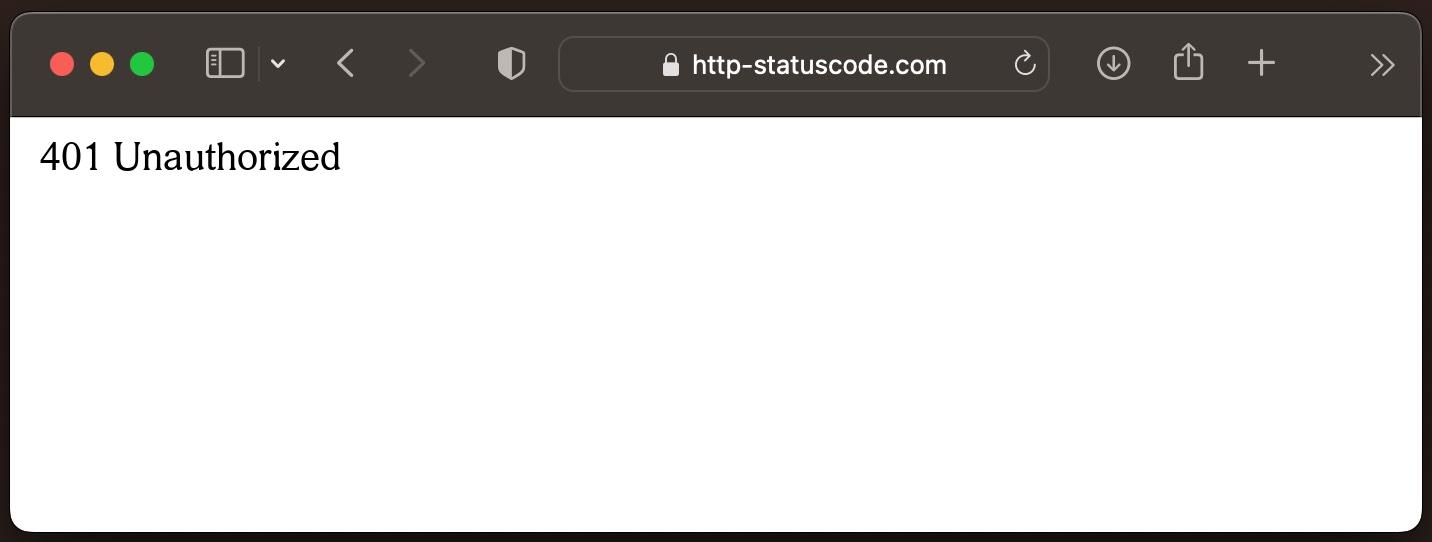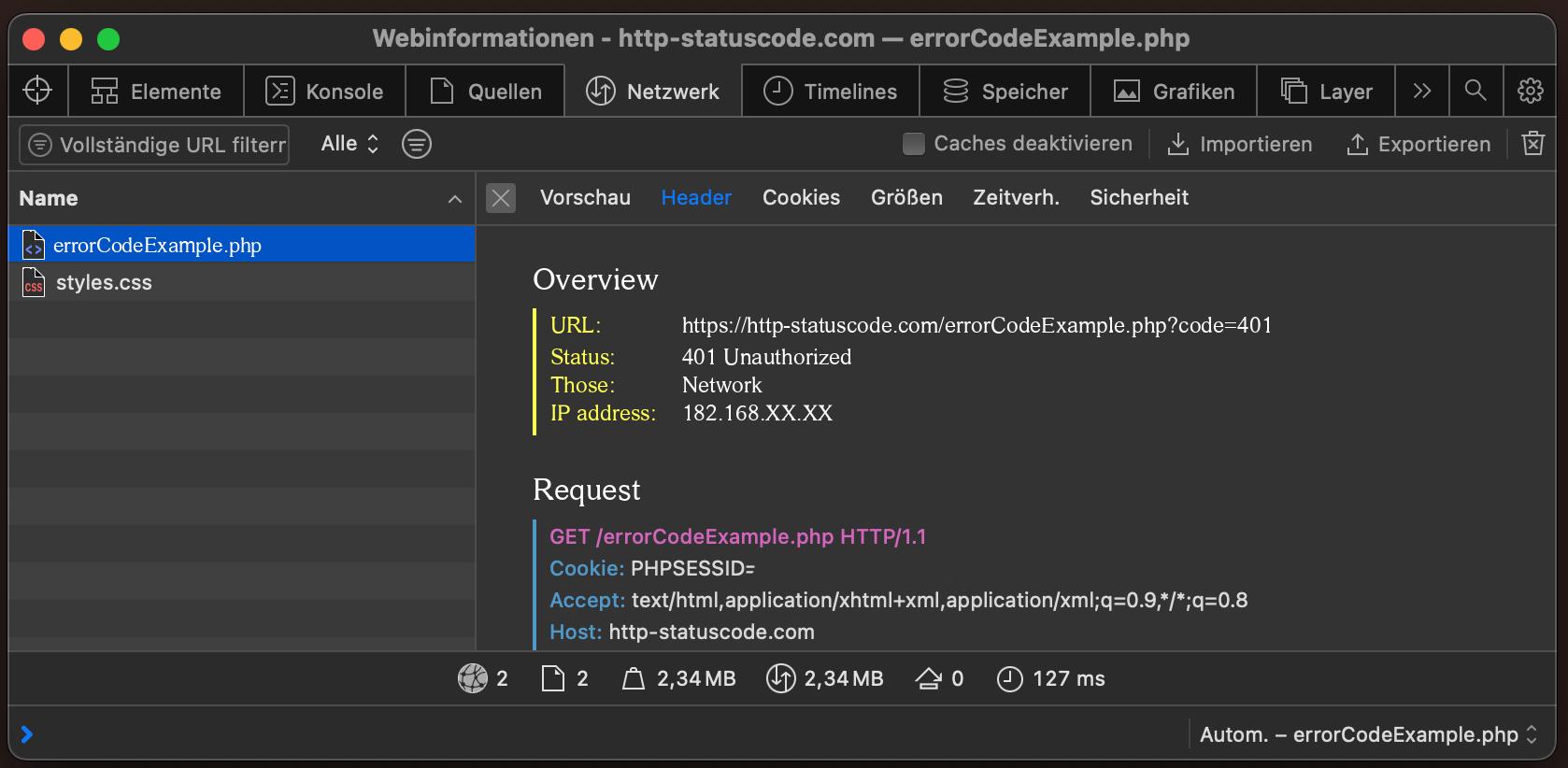401
Unauthorized
Specification of the HTTP status code 401
Source / Quote by: The 401 Unauthorized HTTP Status Code is specified by section 3.1 of RFC7235.
HTTP-Protocol
How to throw a 401 statuscode with PHP?
To throw the HTTP status code 401 on a web page, the PHP function http_response_code can be used. The syntax is as follows: http_response_code(401) (PHP 5 >= 5.4.0, PHP 7, PHP 8)
Test the 401 HTTP status code
In order to be able to display the HTTP status code (in this case 401 Unauthorized) and other information on the client side, the development console must be opened with F12. Afterwards you have to navigate to the tab "Network". Now you can open the page, in the network tab you should see the web page (example index.php). This must be selected and then the Herder section must be selected. Here the user will see the following result:

URL: https://http-statuscode.com/errorCodeExample.php?code=401
Status: 401 Unauthorized
Those: Network
IP address: XX.XX.XX.XX

How to create a custom error page for the 401 status code
Apache Webserver
The web server "Apache" is one of the most popular web servers on the Internet. To create an own 401 Unauthorized error page in "Apache", the following change must be made in the following file.
NGINX Webserver
Similar to the web server "Apache", "NGINX" is also widely used on the Internet. To create your own 401 Unauthorized error page in "NGINX", the following change must be made in the following file.
location = /401.html {
root /usr/share/nginx/html;
internal;
}
Browser compatibility of the 401 status code
| Chrome | Yes |
| Edge | Yes |
| Firefox | Yes |
| Opera | Yes |
| Safari | Yes |
| Chrome Android | Yes |
| Firefox for Android | Yes |
| Opera Android | Yes |
| Safari on iOS | Yes |
| Internet | Yes |
| WebView Android | Yes |
Constants in programming languages
HttpStatusCode.Unauthorized
http.StatusUnauthorized
Response::HTTP_UNAUTHORIZED
httplib.UNAUTHORIZED
http.client.UNAUTHORIZED
http.HTTPStatus.UNAUTHORIZED
:unauthorized
Sub status codes of the 401 status code
| 401.1 | Logon failed HTTP IIS, Unofficial |
| 401.2 | Logon failed due to server configuration HTTP IIS, Unofficial |
| 401.3 | Unauthorized due to ACL on resource HTTP IIS, Unofficial |
| 401.4 | Authorization failed by filter HTTP IIS, Unofficial |
| 401.5 | Authorization failed by ISAPI/CGI application HTTP IIS, Unofficial |
| 401.501 | Access Denied: Too many requests from the same client IP; Dynamic IP Restriction Concurrent request rate limit reached. HTTP IIS, Unofficial |
| 401.502 | Forbidden: Too many requests from the same client IP; Dynamic IP Restriction Maximum request rate limit reached. HTTP IIS, Unofficial |
| 401.503 | Access Denied: the IP address is included in the Deny list of IP Restriction HTTP IIS, Unofficial |
| 401.504 | Access Denied: the host name is included in the Deny list of IP Restriction HTTP IIS, Unofficial |
External links with more information about HTTP status code 401:
Funny memes about HTTP status code 401
Blog Articles
Protection against attacks through the xmlrpc.php file in WordPress
Section 1: What is the xmlrpc.php file and where is it foundThe xmlrpc.php file is an important component in WordPress, one of the world's leading content management systems (CMS) for creating and ...
